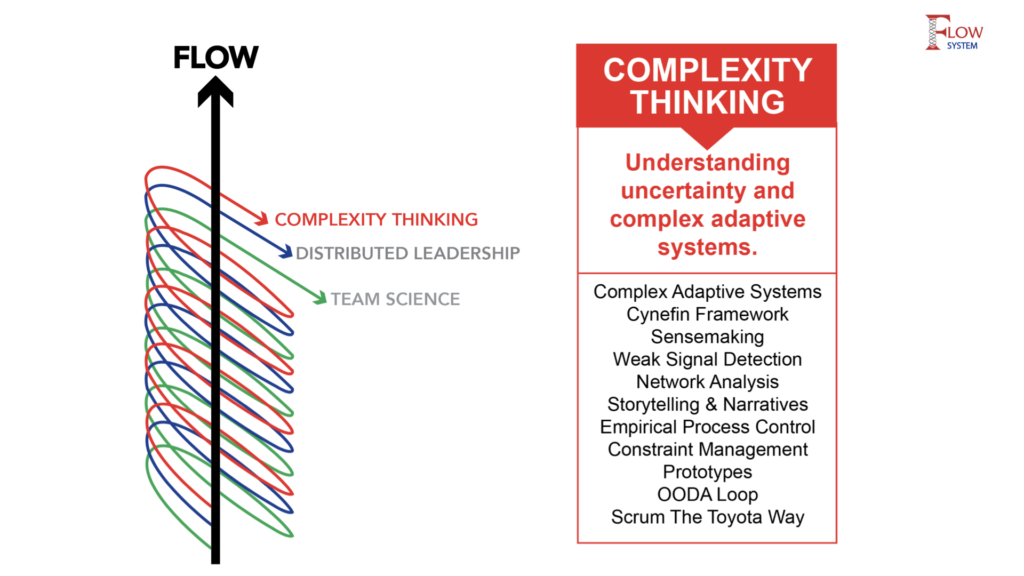
Complexity Thinking
Complexity thinking is a new form of thinking to aid in understanding uncertainty and complex adaptive systems. It is first essential to understand that not everything is predictable due to the unknown-unknowns that are present in complex environments. Complex environments involve multiple possible states, varying from location to location, and can change conditions rapidly in a short amount of time. It is the understanding of the variety in one’s environment that is essential to complexity thinking. Once the variety in one’s climate has been identified, complexity thinking can be applied.
Complexity thinking involves two primary steps:
Step 1: Understanding the characteristics of complex systems.
Step 2: Have a worldview or perspective that systems, entities, and events are complex adaptive systems.
Complex Environments
Operating in complex environments is an exploratory process where the whole is not understood completely. Complexity thinking, in part, aids in being able to focus on what cannot be explained as opposed to focusing on what can be explained. Due to the ambiguity, uncertainty, and unknowns that are present in complexity, specific methods, techniques, and tools have been identified to help navigate these waters.
Participant Workbooks (Clickable links:)
Complex Adaptive Systems Workbook
Weak Signal Detection Workbook
Storytelling and Narratives Workbook
Empirical Process Control Workbook
Constraint Management Workbook